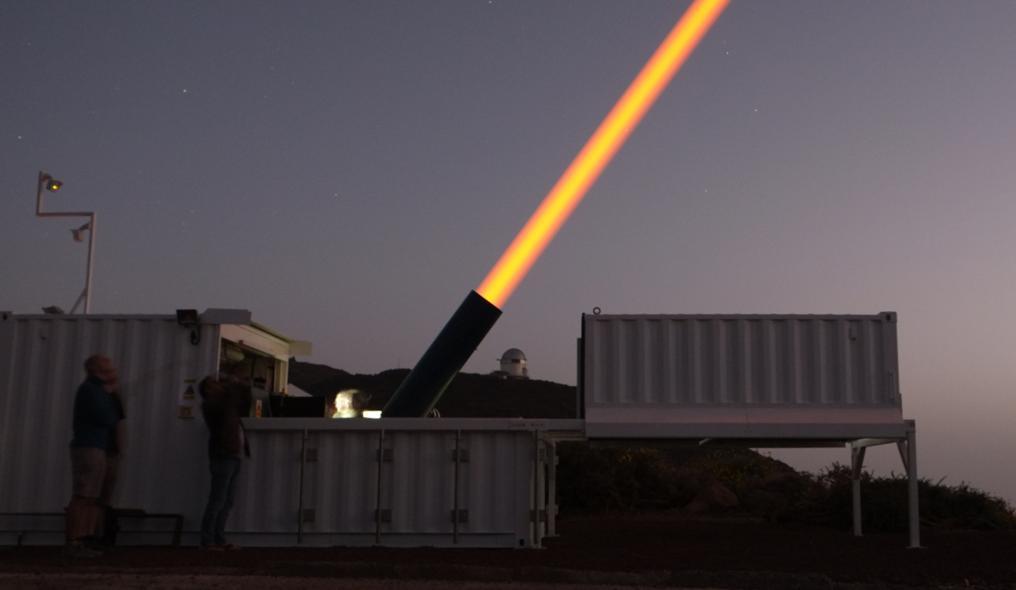Free-space optical communications optical ground stations
We are developing the tools required to achieve enable regular, robust and sustained Free Space Optical Communication (FSOC) links between the ground and orbiting satellites. The large bandwidth available from using visible light, as opposed to conventional radio communication, will enable 10-100 times higher data rates, helping us to meet demands for higher capacity data transmissions that societies around the world have become accustomed to, as well as to increase the volume of data retrieved from space science satellites used for Earth observation, inter-planetary and deep space missions. This increase in transmission rates is analogous to moving from traditional copper cables to fibre optics.
Optical ground stations
Atmospheric optical turbulence is detrimental to free-space optical communications, causing the beam to wander and break even into speckles, limiting the stability and bandwidth of these important links.
We are developing optical turbulence forecasting and measurement tools, sophisticated optical propagation modelling tools and mitigation techniques to support future operational systems.
For more information see here.



/prod01/prodbucket01/media/durham-university/departments-/physics/cfai/CfAI-Webpage-Banner-smaller.jpg)